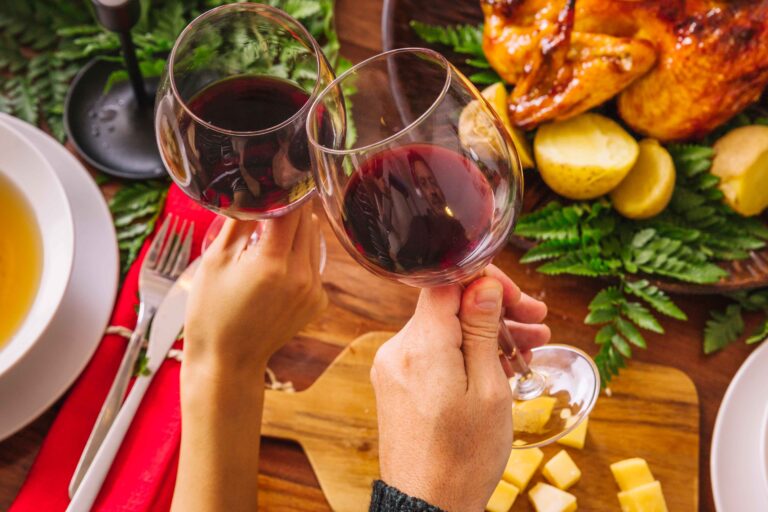
The Art of Pairing Wine with Food
Pairing wine with food can elevate a dining experience, creating a harmonious balance of flavors that enhances both the dish and the wine. While the rules of wine pairing may seem complex, once you understand the basics, it becomes an enjoyable and creative part of meal planning. In this blog, we’ll explore how to pair different types of wine with food, offering tips and suggestions to help you create perfect combinations.
Why Does Wine Pairing Matter?
Wine and food pairing isn’t just about drinking wine with your meal—it’s about enhancing the overall flavor experience. When done correctly, a good wine pairing can bring out hidden nuances in both the food and the wine, creating a synergy that improves the taste of both.
- Complementary Flavors: Wine pairing allows complementary flavors to blend beautifully, such as a buttery Chardonnay with a rich cream sauce.
- Contrast and Balance: A crisp, acidic wine can cut through the richness of a fatty dish, offering balance. For instance, a sparkling wine can balance the fattiness of fried foods.
- Cultural Significance: Many traditional pairings are rooted in history and culture, such as Italian Chianti with pasta, or French Bordeaux with beef.
Basic Wine Pairing Guidelines
- Red Wine with Red Meat: This classic rule holds true because the tannins in red wine complement the fat in red meat, enhancing the flavors. A robust Cabernet Sauvignon pairs beautifully with a grilled steak.
- White Wine with White Meat and Seafood: Lighter meats and seafood benefit from the crisp acidity of white wines. A Sauvignon Blanc complements the delicate flavors of grilled fish.
- Match Weight and Intensity: The weight and intensity of both the wine and the food should match. For instance, a delicate Pinot Noir pairs well with roasted chicken, while a bold Zinfandel can handle the intensity of barbecued ribs.
- Sweet with Spicy: Sweet wines like Riesling work wonders with spicy foods, offering a cooling contrast to the heat.
- Consider the Sauce: The sauce or seasoning in a dish often dictates the best wine pairing. A tomato-based pasta sauce works well with medium-bodied red wines like Merlot.
Examples of Great Food and Wine Pairings
1. Sauvignon Blanc with Goat Cheese Salad
Sauvignon Blanc’s high acidity cuts through the richness of goat cheese, making it a refreshing match for a tangy goat cheese salad with citrus vinaigrette.
2. Chardonnay with Creamy Pasta
A full-bodied Chardonnay, with its creamy texture and buttery notes, pairs beautifully with rich, creamy pasta dishes such as fettuccine Alfredo or a seafood linguine.
3. Pinot Noir with Grilled Salmon
Pinot Noir is one of the few red wines that pairs well with fish. Its light body and red fruit flavors complement the richness of grilled salmon without overpowering it.
4. Malbec with Barbecue
The smoky, grilled flavors of barbecued meats are matched perfectly by the bold, fruity flavors of a Malbec. Its tannins and acidity can stand up to the intensity of the barbecue sauce.
How to Experiment with Wine Pairing
Wine pairing is as much an art as it is a science, and part of the fun is experimenting with different combinations. Start by identifying the dominant flavor in your dish—whether it’s spicy, sweet, acidic, or rich—and choose a wine that either complements or contrasts that flavor.
- Start with a Simple Dish: Try pairing a basic dish like grilled chicken or a simple salad with different types of wine to see how the flavors change.
- Test with Friends: Host a wine pairing dinner with friends and test out different pairings together. It’s a fun way to learn and discover new favorites.
- Trust Your Palate: At the end of the day, personal preference matters. If you enjoy a particular wine with a certain dish, that’s all that counts!
In conclusion, wine pairing is an enjoyable way to enhance both your food and wine experience. Whether you’re a seasoned wine connoisseur or just starting, following basic pairing principles and experimenting with flavors can help you find that perfect match.

